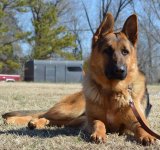Taking them from a warm inside to a cold outside is a great way to check whether the glass is still airtight.
If they are not, there will probably be moisture condensing inside the objective lenses. That is a signal to send them in for a refurbishment.
Have to say, I never understood why the insides of the better glasses are not fitted with desiccant pods. It would cost very little and be a good backstop to the normal weather sealing.
Dessicants were used in optics during WWII. Those conditions are
worse than most binoculars will ever see in normal conditions.
The Nitrogen sealing of today is good, but not without fail. There is no
pressure involved but a simple exchange of normal air with N. This
design is only sealed with O-rings.
The chance of a leak from water coming in or fungus happening
does happen but it is rare. Some use a dry box for that purpose,
an enclosed box with heat helps dehydrate the optic.
I recall the poster from Indonesia who was a birding guide, and often
posted his great bird photos. He used a dry box, and used a Nikon 8x32
SE with great success, and those are not waterproof.
Someone will help out with his name.
I hope Bill C. will chime in with more on the subject.
Jerry











